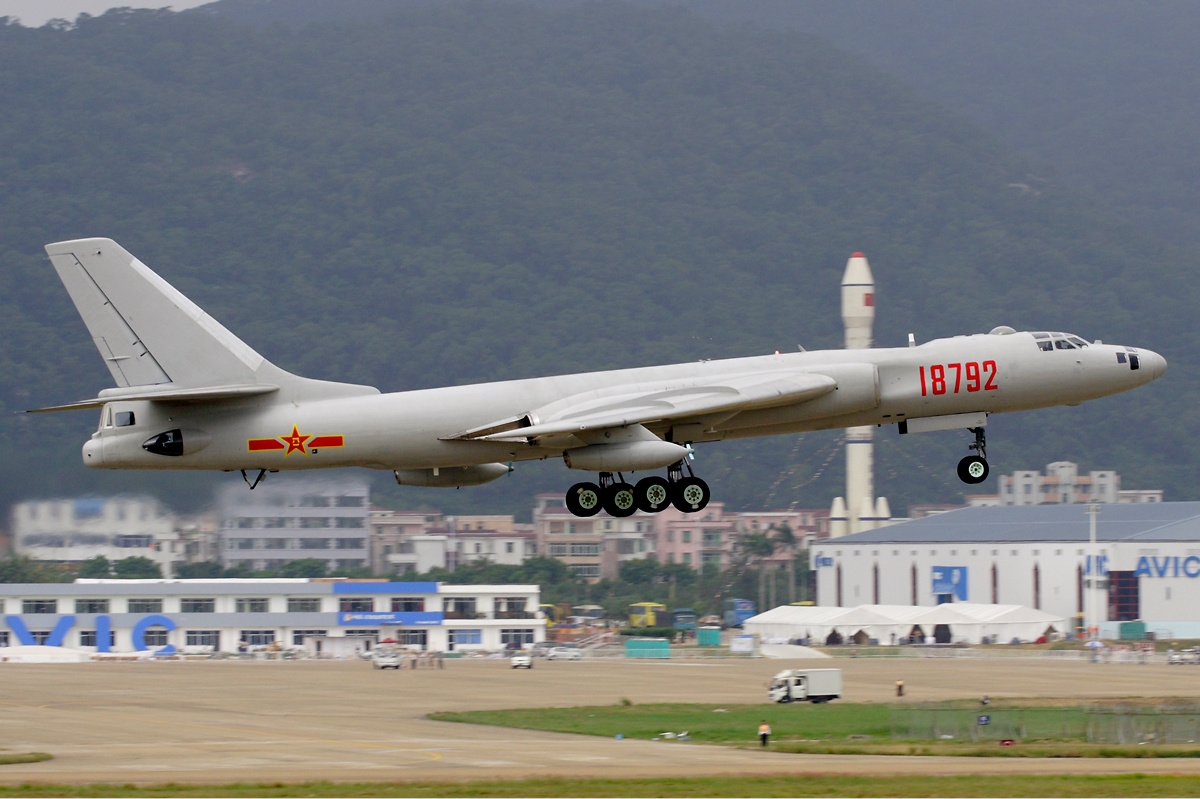Chinese H-6 Bomber.jpg

Part 1 of 2 Parts
Recently I posted about the Chinese nuclear arsenal and their nuclear policy. In that post, I talked about what nuclear weapons and delivery systems they have and their publicly stated policy with respect to what circumstances would cause them to employ nuclear weapons. Today, I am going to talk about a particular new nuclear Chinese weapon that may have been accidentally revealed.
The Chinese government publishes a magazine called Modern Ships. They have just produced an edition which contained high-resolution computer-generated images of their strategic bomber fleet including their most recent addition called the H-6N. The image of the H-6N bomber showed a very large ballistic missile mounted under its fuselage. The missile shown appears to resemble a well-know family of ballistic missiles that have been deployed by the China’s People’s Liberation Army Rocket Force (PLARF). The purpose of these missiles is to attack and sink enemy aircraft carriers.
When the international press began to speculate about the identity and possible use of the new missile shown, the Chinese state-owned Global Times immediately claimed that “The images are computer generated, merely conceptual and have no official background.”
Western defense analysts were very concerned about the missile shown in the Modern Ships photo spread. Malcom Davis is an analyst for the Australian Strategic Policy Institute. He said “If (this) is correct then this would be an impressive anti-ship standoff capability for the PLA (People’s Liberation Army), that would extend the utility of the DF-21D out well beyond the first island chain. That would theoretically match the ground-launched DF-26 anti-ship capable (intermediate ballistic missile), and increase the risk for US aircraft carrier battle groups … the Chinese are clearly trying to make it costlier for the US to project power into the western pacific, to the point where the US simply chooses not to intervene in a crisis.”
The DF-21D or Dong-Feng 21 is a two-stage solid-fuel rocket, single-warhead medium-range. The Dong-Feng series of missiles was first deployed around 1991. The missiles in the series can carry a variety of warheads and be used for a variety of purposes. The DF-21D is thought to be the first anti-ship ballistic missiles (ASBM).
People interested in international weaponry have pointed out some interesting things about the N version of the Xian H-6 series of strategic bombers. This version was first shown to the public during the Seventieth National Day parade in October of this year. The state-controlled Xinhua new service stated that the H-6N was a “homemade strategic bomber capable of air refueling and long-range strike”.
When three of the H-6N bombers flew over the parade grounds in Beijing, military analysts noticed that there were no bomb-bay doors on the bombers. In place of the bomb-bay doors, the bombers had new heavy-duty attachment points positioned in a groove along the center-line of the fuselages. The bombers also had modified, extended nose-cones and air-to-air refueling nozzles.
These observations triggered a lot of speculation. The consensus of many observers was that the changes that were seen might enable those bombers to carry large, nuclear-capable or hypersonic-speed ballistic missiles. If these speculations are correct, that would make China only the second nation to have such capability.
Russia has an air-launch ballistic missile called the hypersonic Kinzhal in 2017. It was mounted under a MiG-31 interceptor that was part of the Soviet arsenal during the Cold War.
Please read Part 2